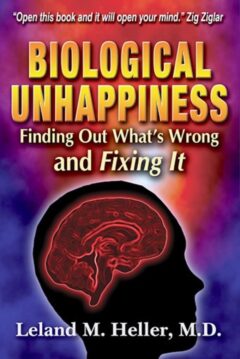Allergies
The bodys immune system protects against foreign invaders, such as bacteria and viruses. When the immune system overreacts or responds inappropriately, allergies can occur. The main treatment is always avoidance, but medications and/or other treatments may be necessary.
Upper respiratory allergies:
This includes disorders such as “hay fever.” Many people are allergic to plant and tree pollen, house dust, dust mites, animal dander (skin mixed with saliva), molds, etc. It can be seasonal. Symptoms are similar to the common cold: itchy runny eyes, sore throat, stuffy and runny nose, respiratory problems including asthma, fatigue, malaise, low grade fever, and sore muscles. Treatment includes avoidance, antihistamines, decongestants, cromolyn, short-term corticosteroids (shots or pills), cromolyn, cortisone nasal sprays, salt water nose sprays, and allergy shots.
Skin Rashes:
Plant poisons (such as ivy and oak), chemicals, fungal infections, insect bites, etc. can cause a painful, itchy rash (called “contact dermatitis”) – sometimes breaking out 2-4 days after exposure. The rash can spread to other body areas – especially the palms and soles (called an “id reaction”). Severe immune system “hyperreactivity” (with a high “IgE” level) can also causes rashes, as can nervous anxiety. Treatment includes avoidance, antihistamine creams and pills, calamine lotion, and steroids (pills, creams, ointments and/or shots).
Anaphylaxis (anna-fuh-lax-iss):
A severe life-threatening allergy causing swelling of the mouth, tongue and throat. It can develop to foods (such as shellfish and nuts), chemicals, drugs, and insect bites. Those at risk must try to avoid the substance, and keep injectable adrenaline (such as Epi-Pen) available at all times – especially for those allergic to insect bites. Treatment includes avoidance, antihistamines, Epi-Pen – or other forms of adrenaline, steroids, allergy shots, and at times wearing a medical alert bracelet.
Food allergies:
Difficult to diagnose – symptoms can include fatigue, bloating, rashes, hyperactivity, fatigue, diarrhea, nausea, and anaphylaxis. Some people have milder food “sensitivities” rather than full allergies. Treatment is avoidance – no good treatment exists for food allergies.
Hives:
An extremely uncomfortable swelling in the skin generally caused by an allergy. Treatment includes avoidance, antihistamines, tranquilizers, cimetidine, hydroxyzine, the new antihistamine Zyrtec, and steroids.
DIAGNOSIS:
The symptoms, physical examination and laboratory results usually will clarify the diagnosis. Specialized tests are available: “IgE” – the immune protein blood level can be measured. Blood tests (RAST) can be helpful at times, and are relatively inexpensive. Skin testing by an allergist usually costs around $500. Other specialized tests are also available, however be careful to avoid useless and expensive tests such as hair analysis.
TREATMENT:
Antihistamines:
Can block the symptoms of many allergies. Most are available without a prescription, but frequently cause drowsiness (they are the main ingredient in over-the-counter sleeping medications), dry mouth, constipation, difficulty urinating, and blurred vision. Men with an enlarged prostate shouldnt use these medicines unless instructed to do so by their physician. Non-sedating antihistamines rarely cause the above mentioned side effects – including urinary problems. They are usually safe, effective, and expensive. Claritin and Zyrtec are once daily, Allegra is taken twice daily.
Mattress & Pillow Covers:
Most upper respiratory allergies are in large part caused or worsened by an insect that eats dead skin. These dust mites can over time become 50% of the mass of your pillow. Allergies often come from- breathing in their excrement. Before undergoing expensive testing or taking medication consider using plastic mattress & pillow covers, and washing the sheets and blankets in hot water. Sometimes using a dust mite insecticide on your carpets and drapes is needed.
Cromolyn:
A preventive medication that will block allergy symptoms when taken regularly either as a lung or nasal inhaler. Very safe, primarily a treatment for asthma and nasal allergies.
Cortisone:
Blocks all parts of the immune response, and can be effective very quickly. Shots or pills are used as intermittent treatments for severe attacks – they are inexpensive, relatively quick, and remarkably effective. The nasal spray is very effective, can be taken long term, and rarely causes side effects – but severe infections (especially by funguses) are a risk.
Leukotriene Inhibitors:
Newer agents that are showing promise, especially for chronic allergies and asthma.
Allergy Shots:
The treatment of last resort. They can be expensive, painful, dangerous, and take a long time to work. Approximately 1/3 of patients get significant symptom relief. Allergy shots (also called “desensitization”) can be a miracle treatment for those not responding to other treatments.
10/20/99
